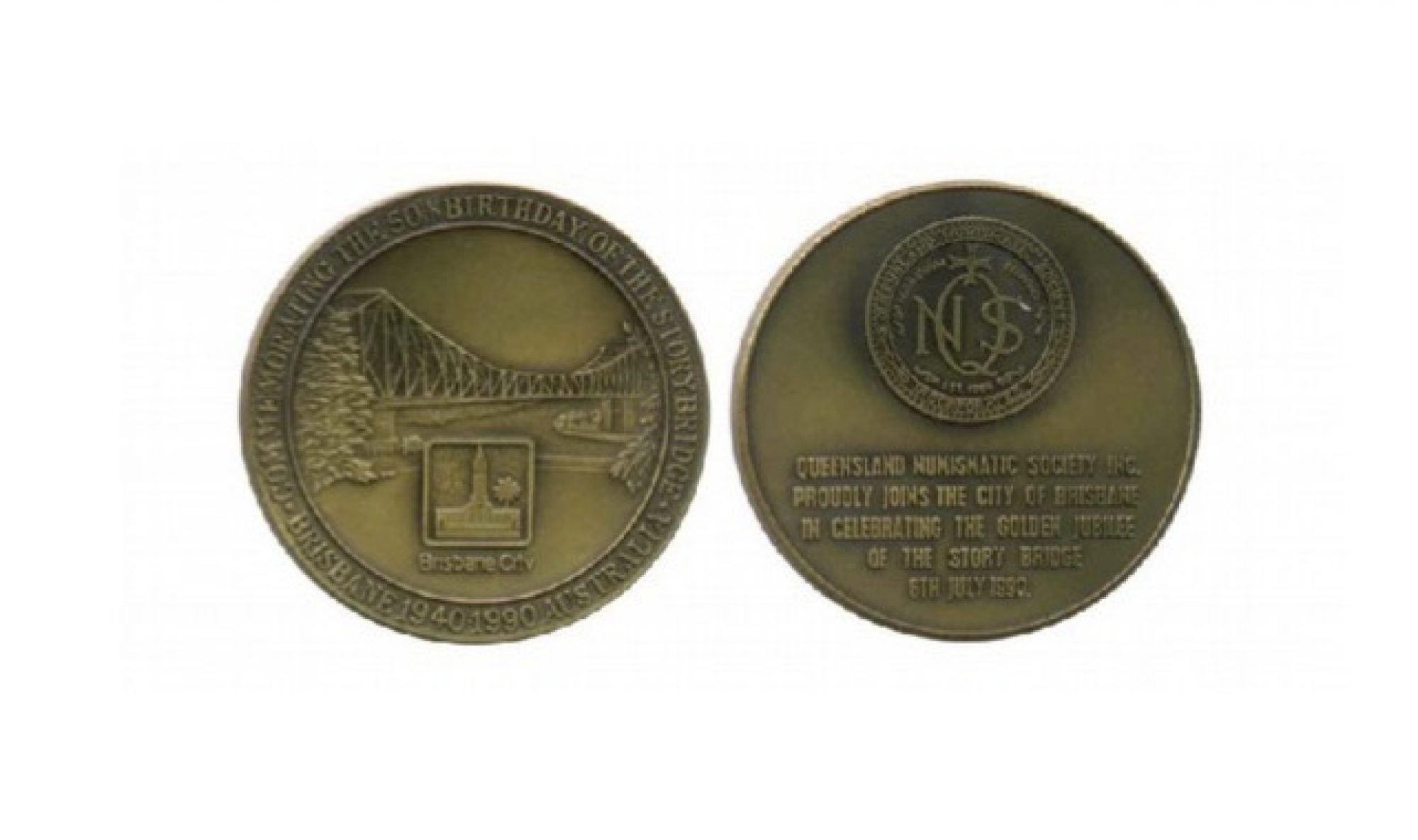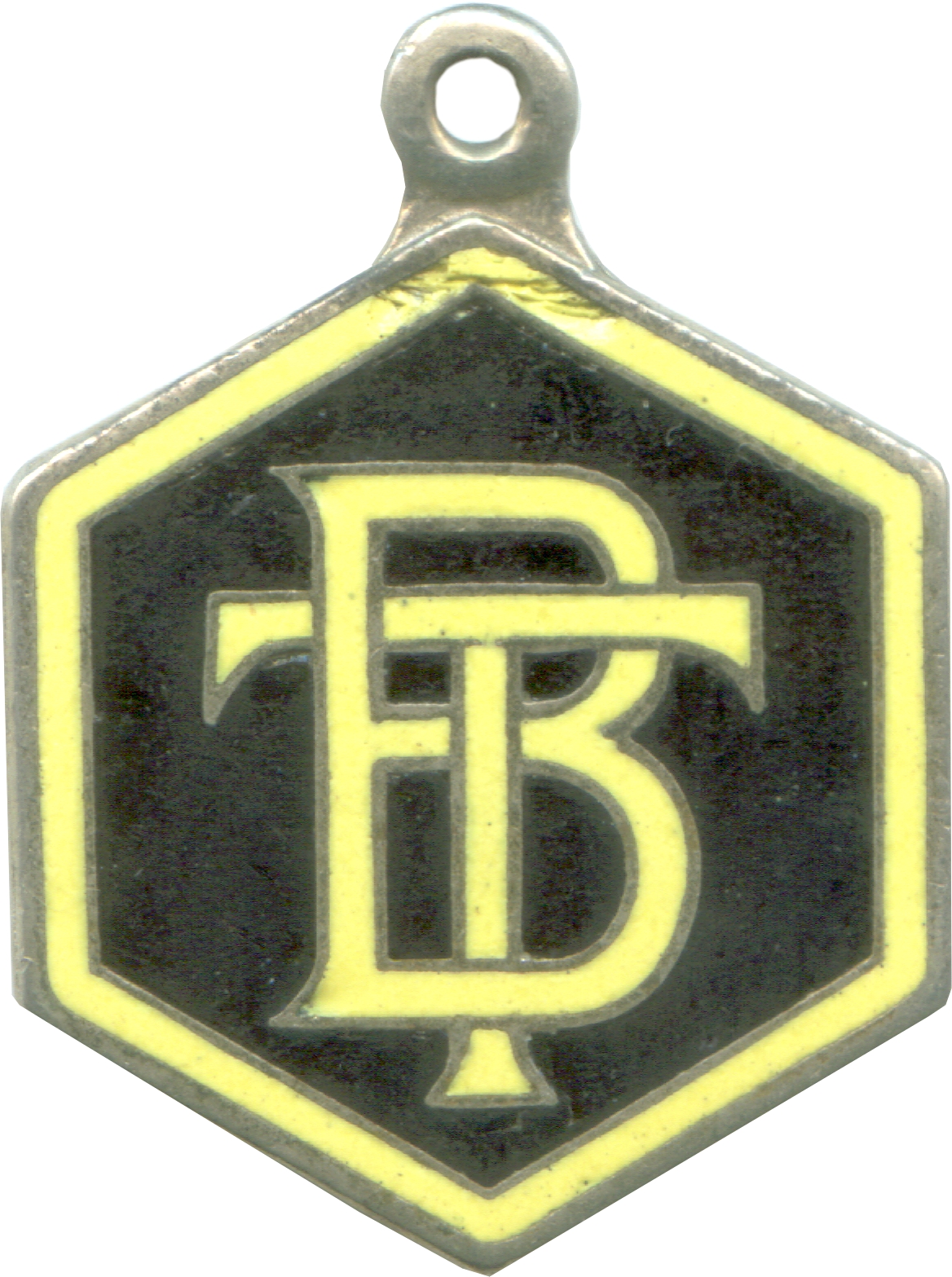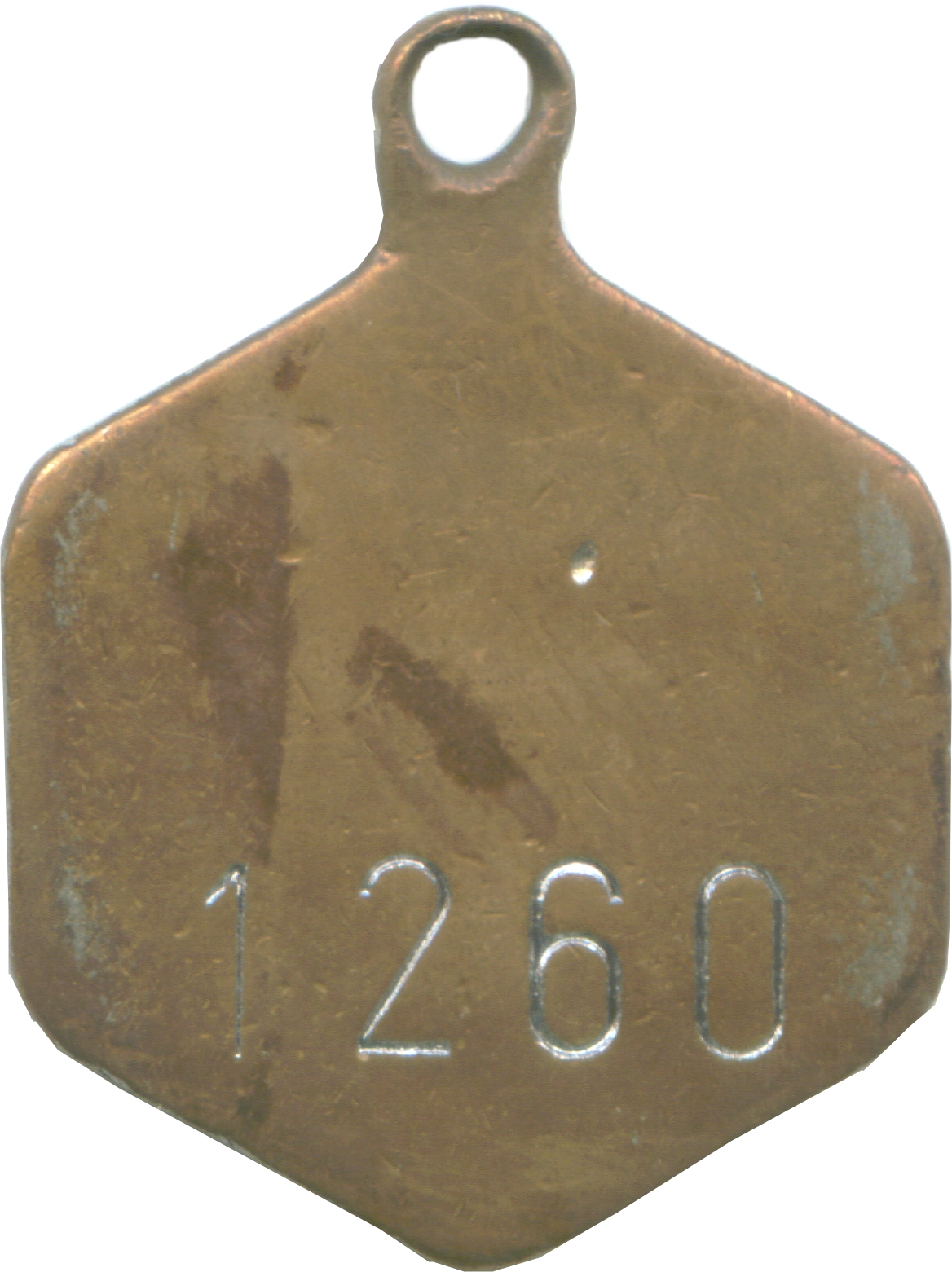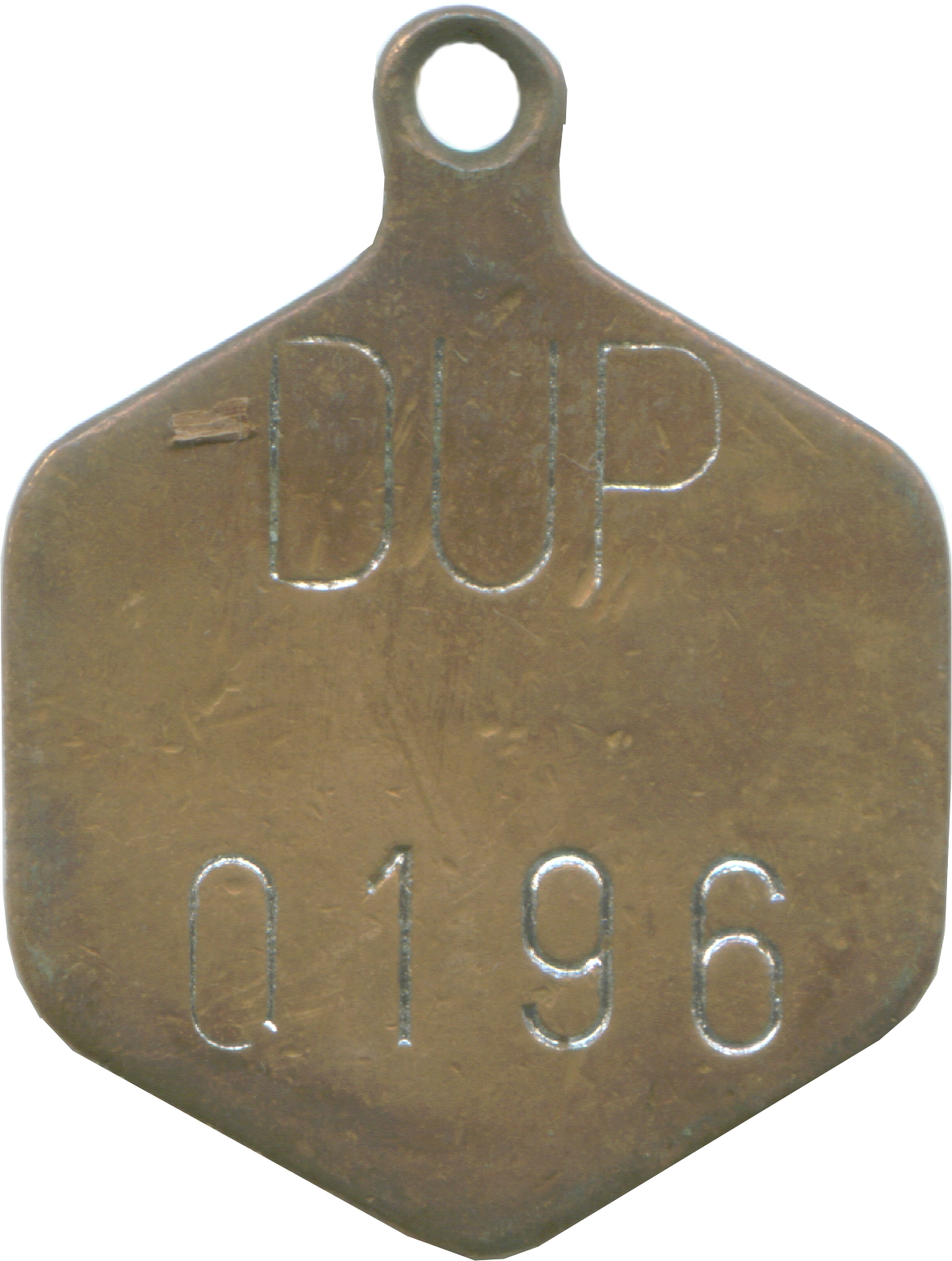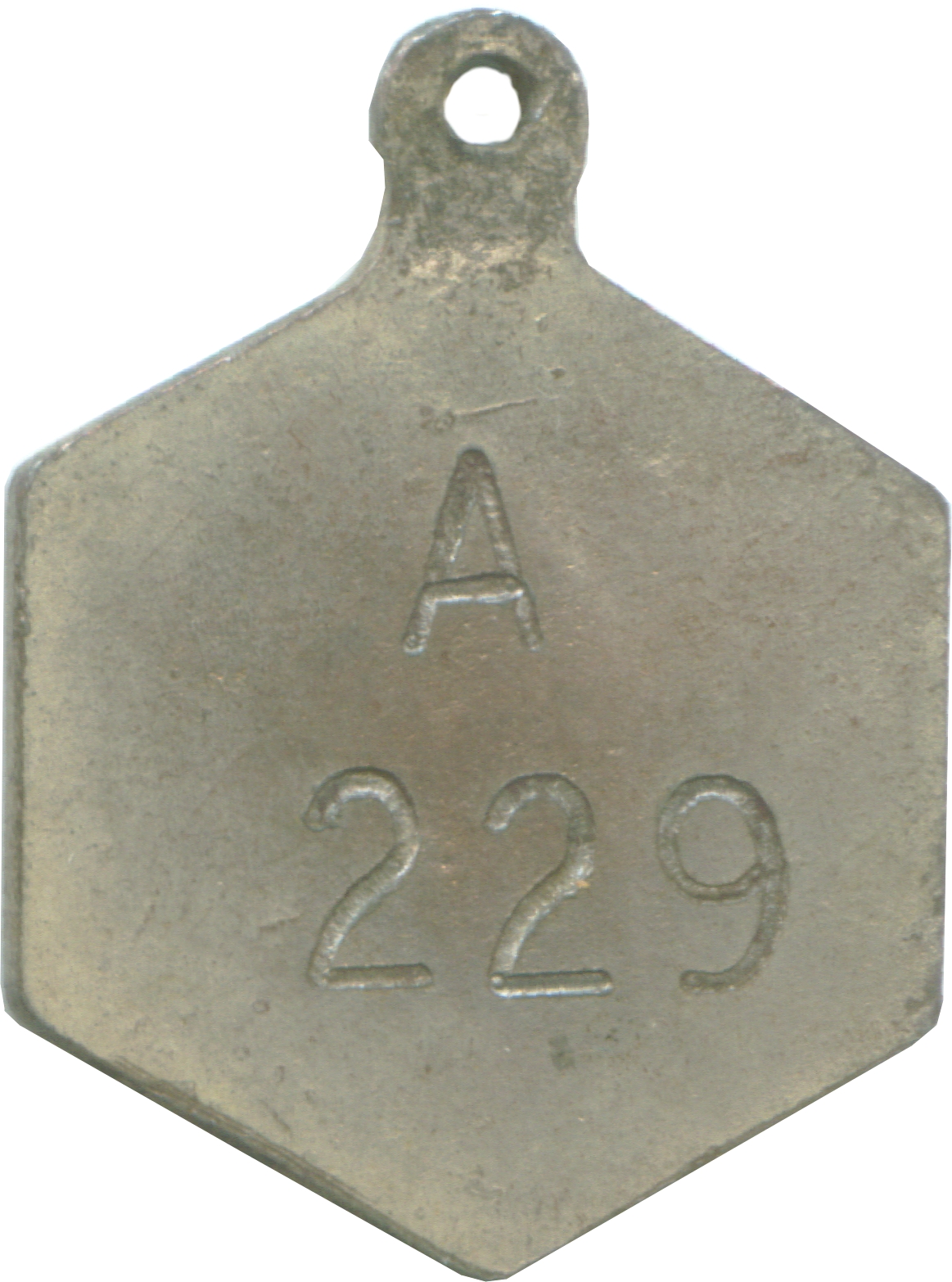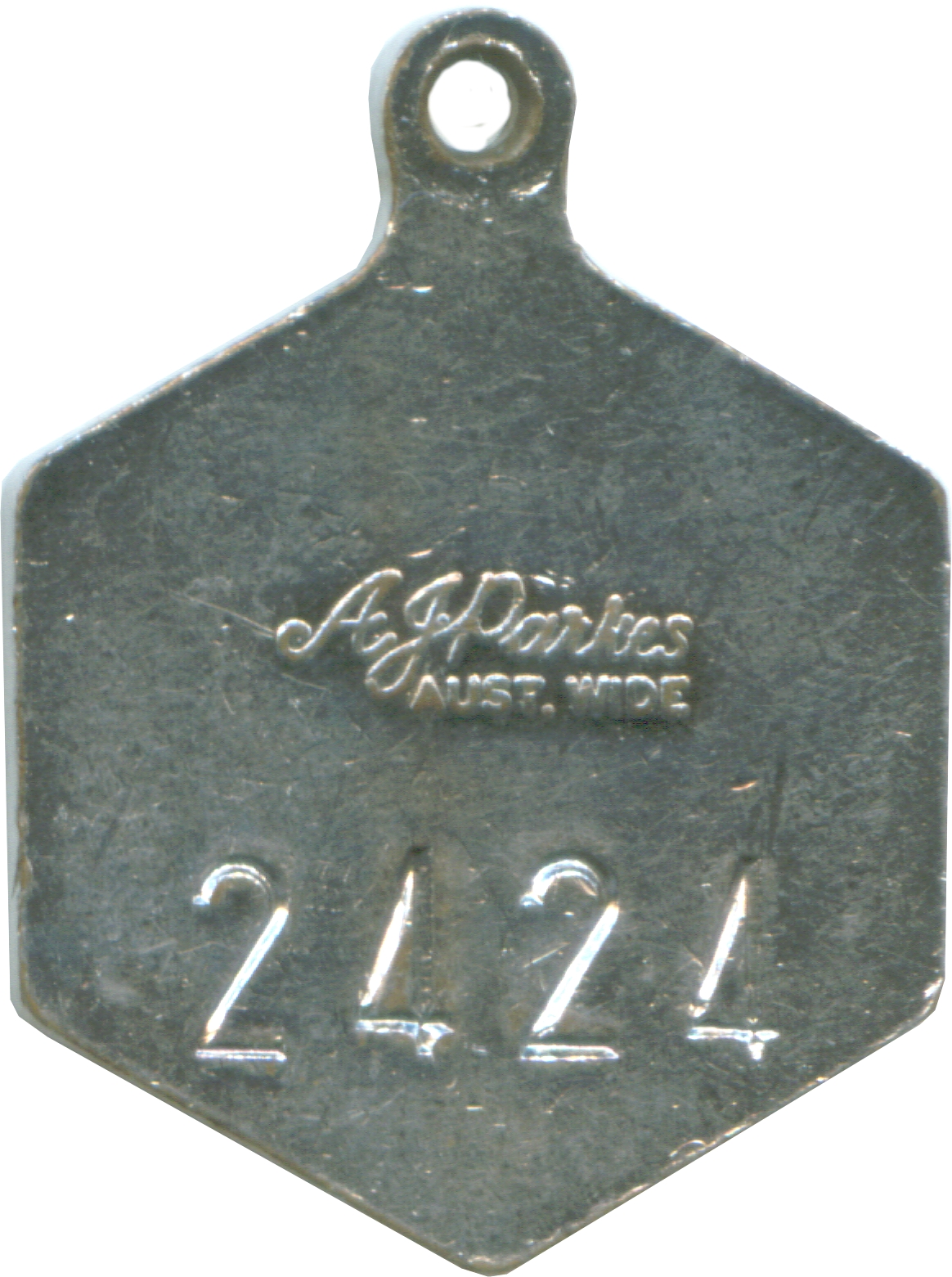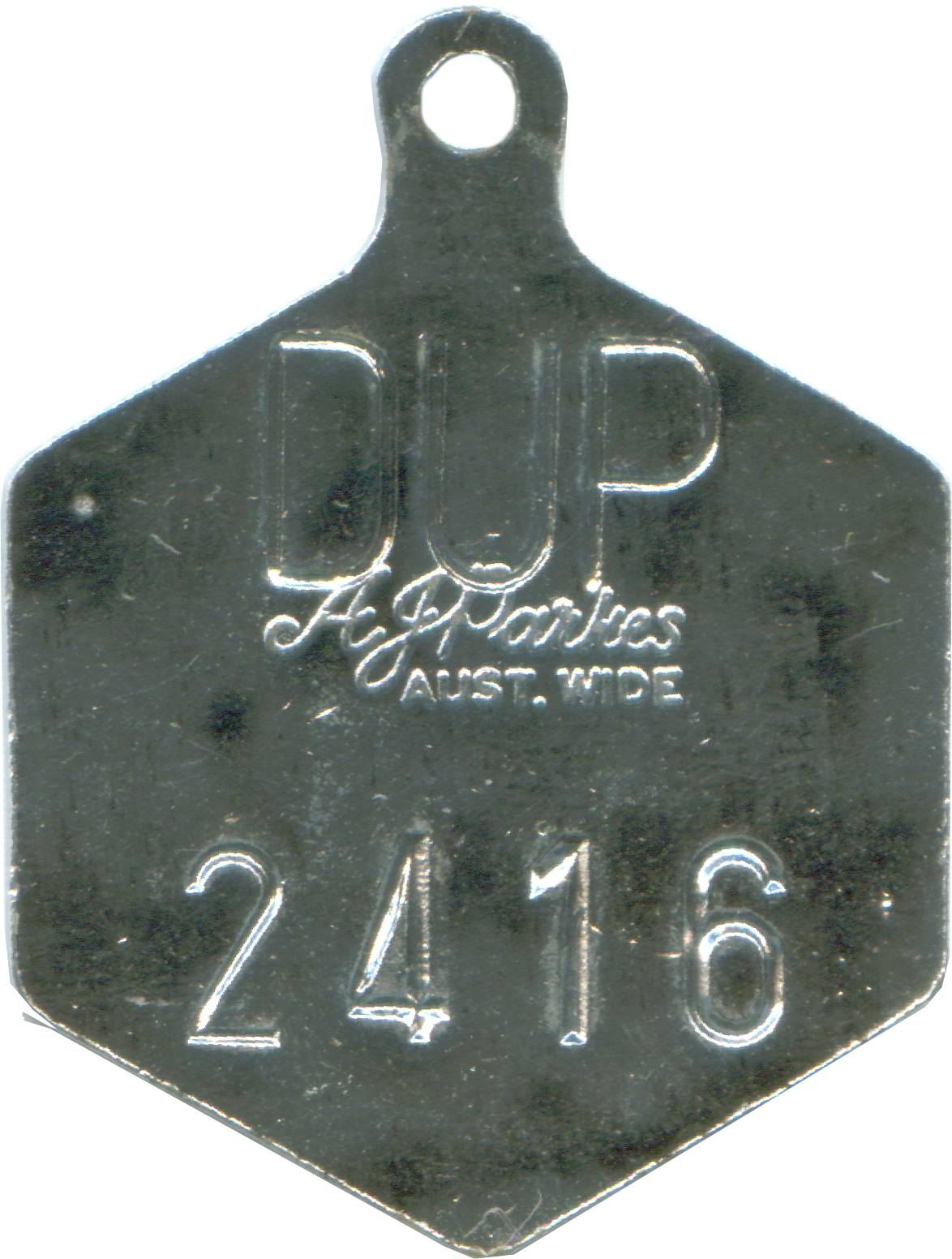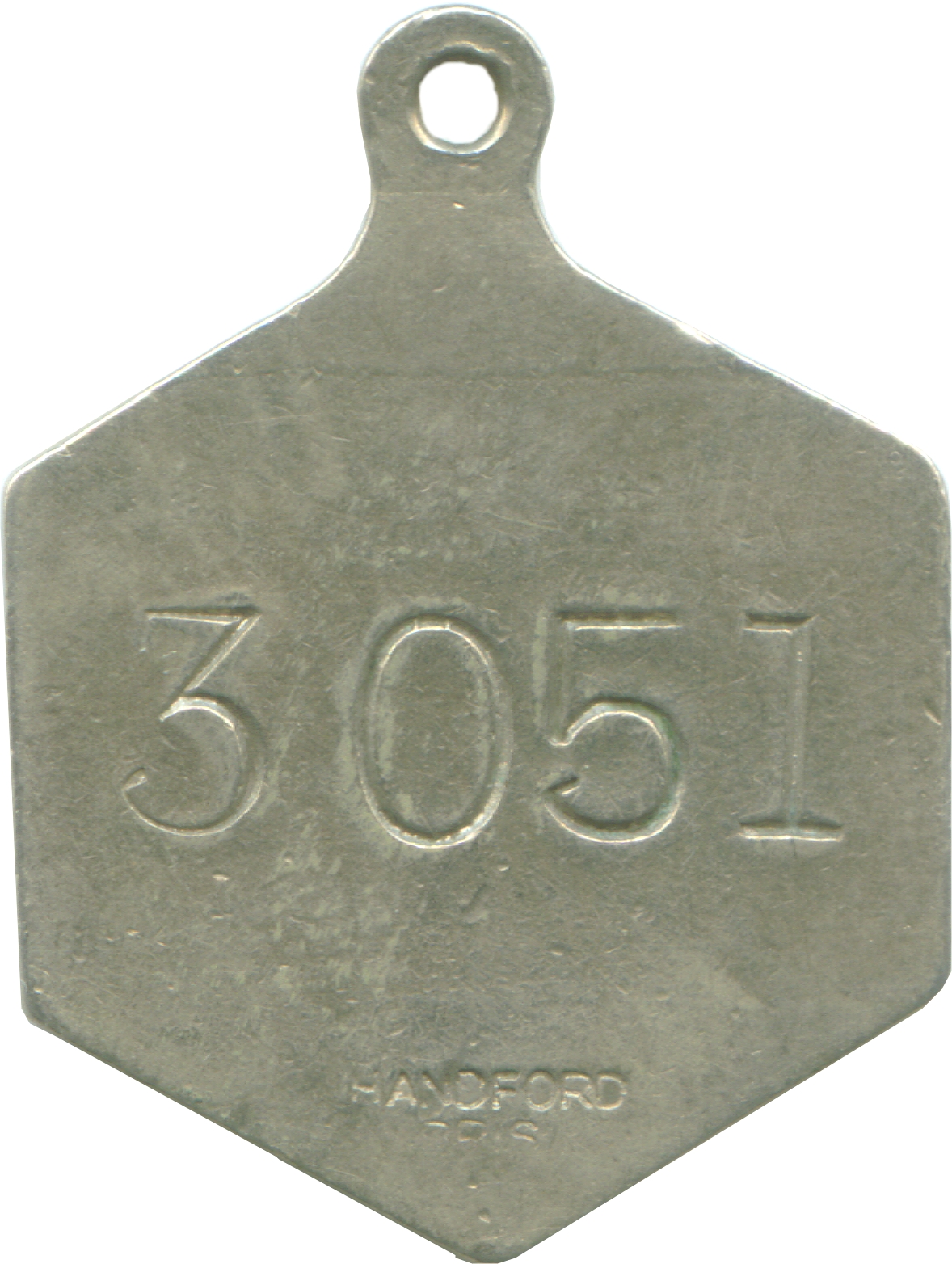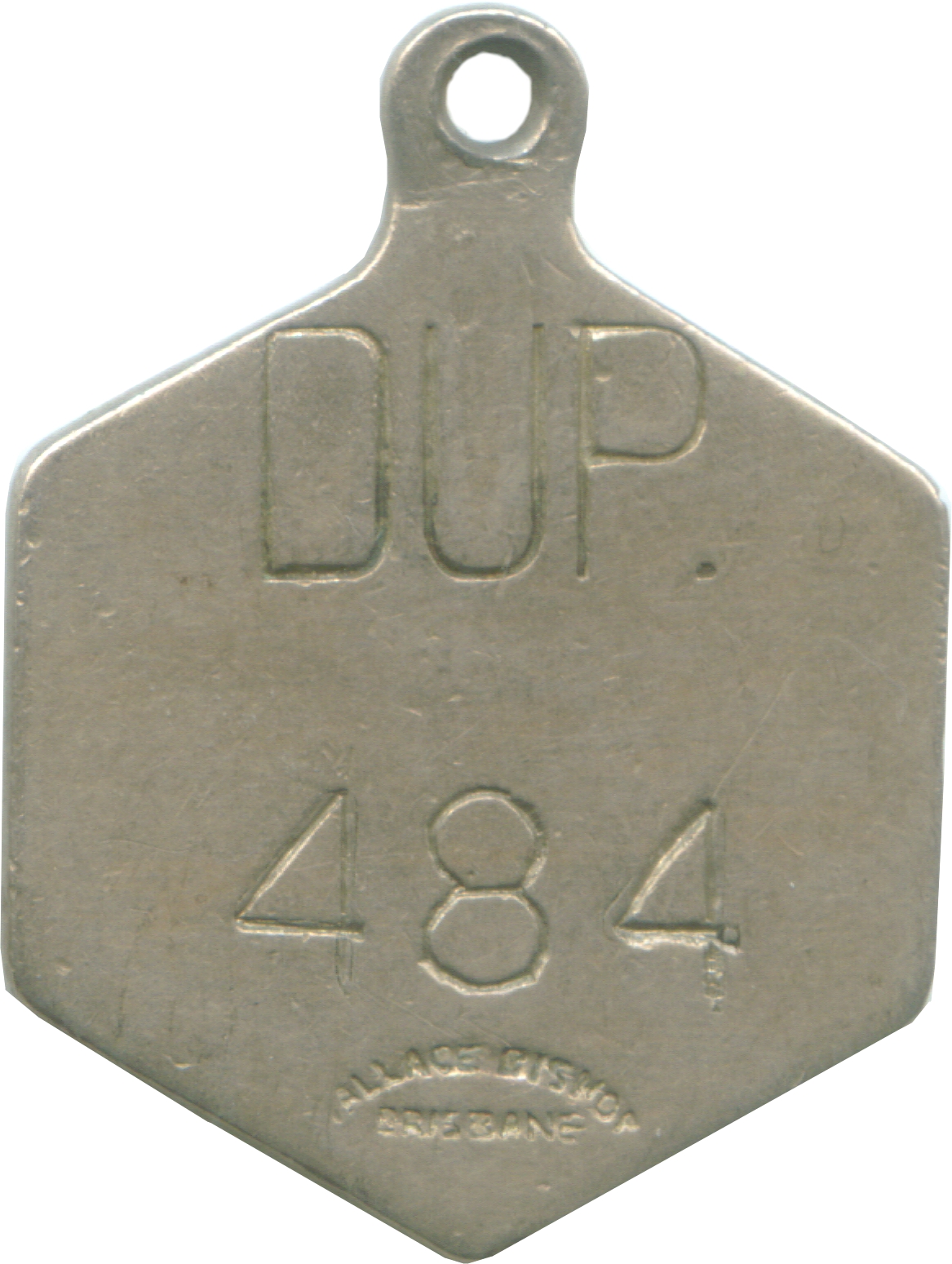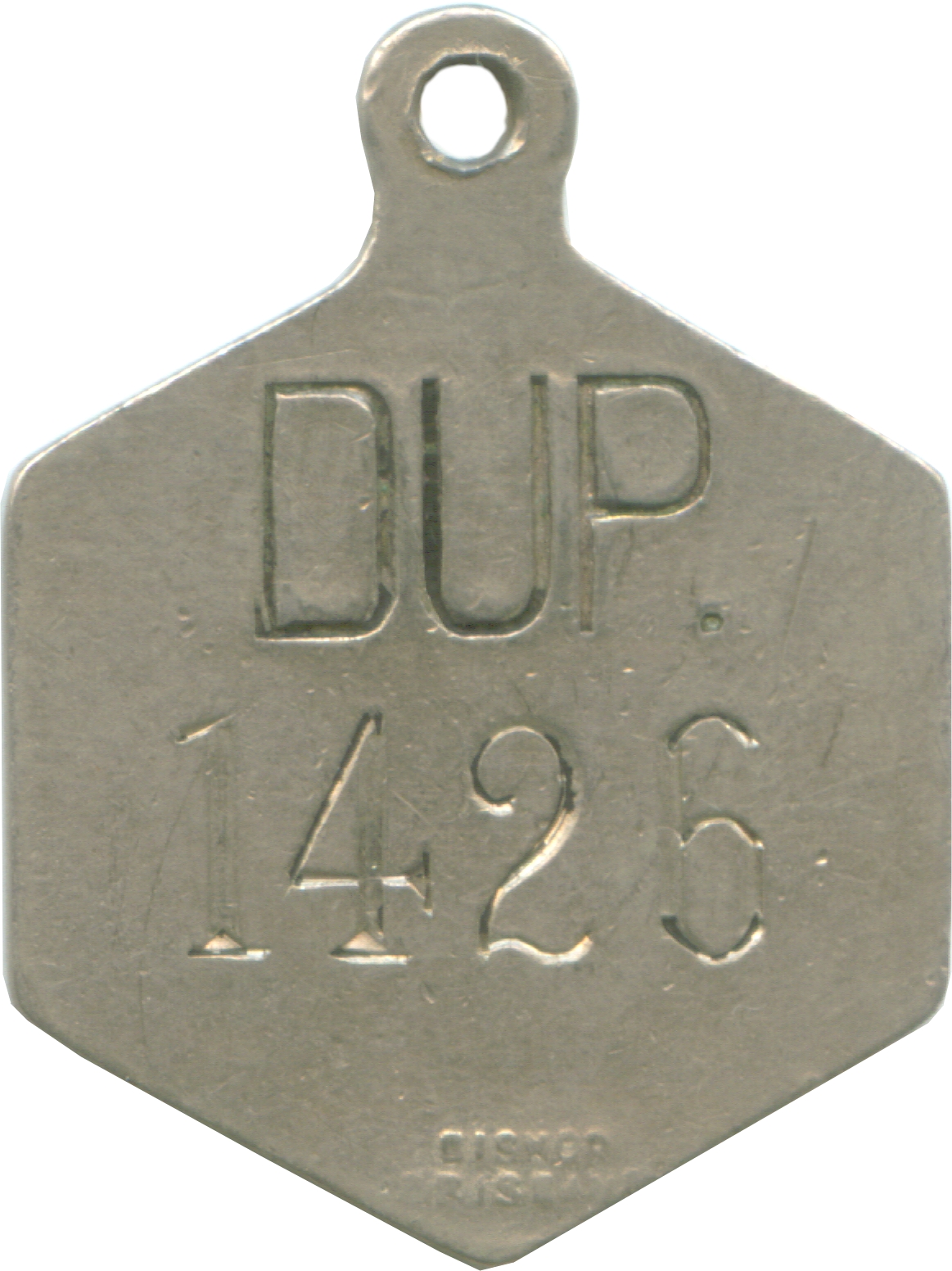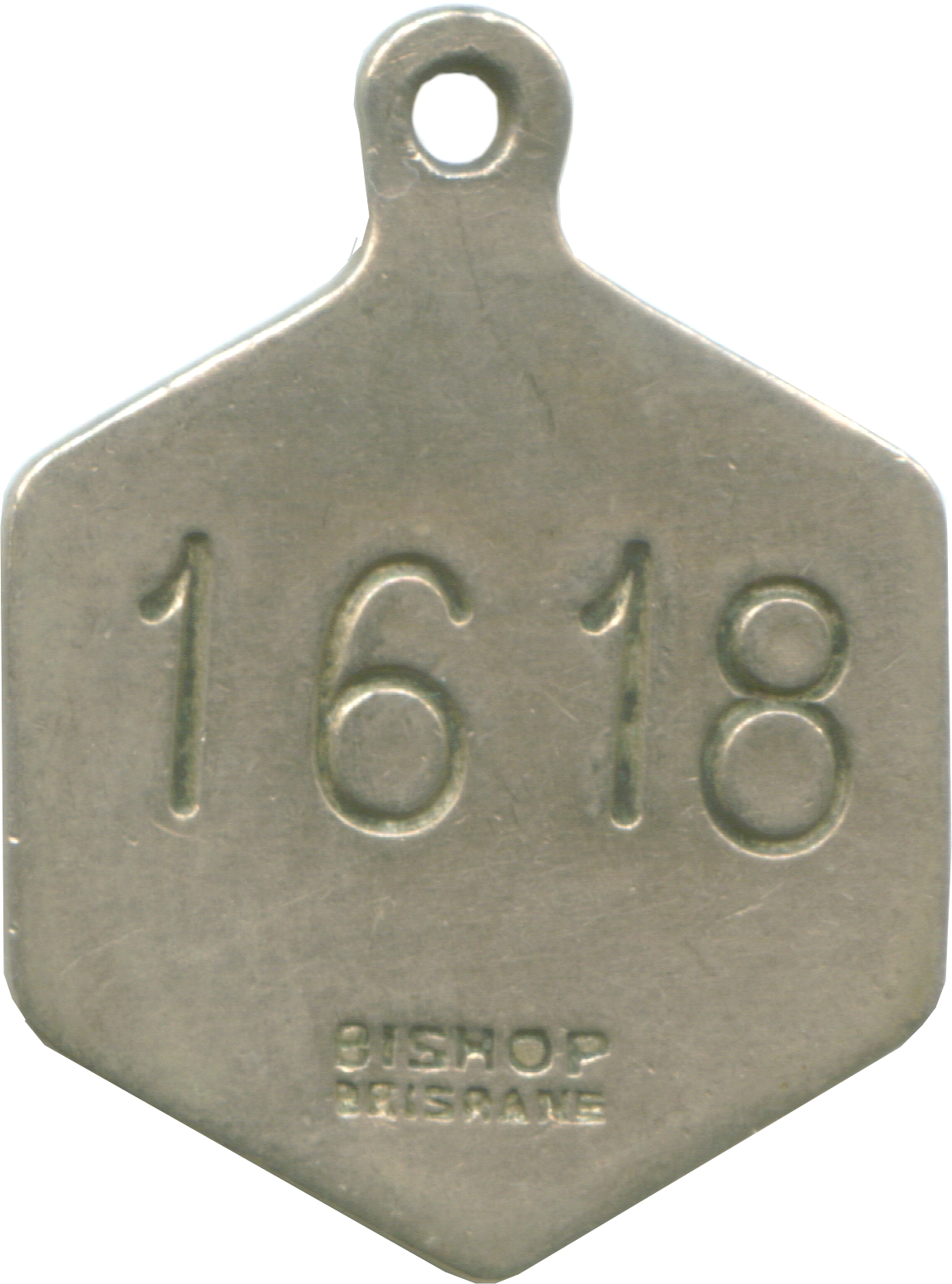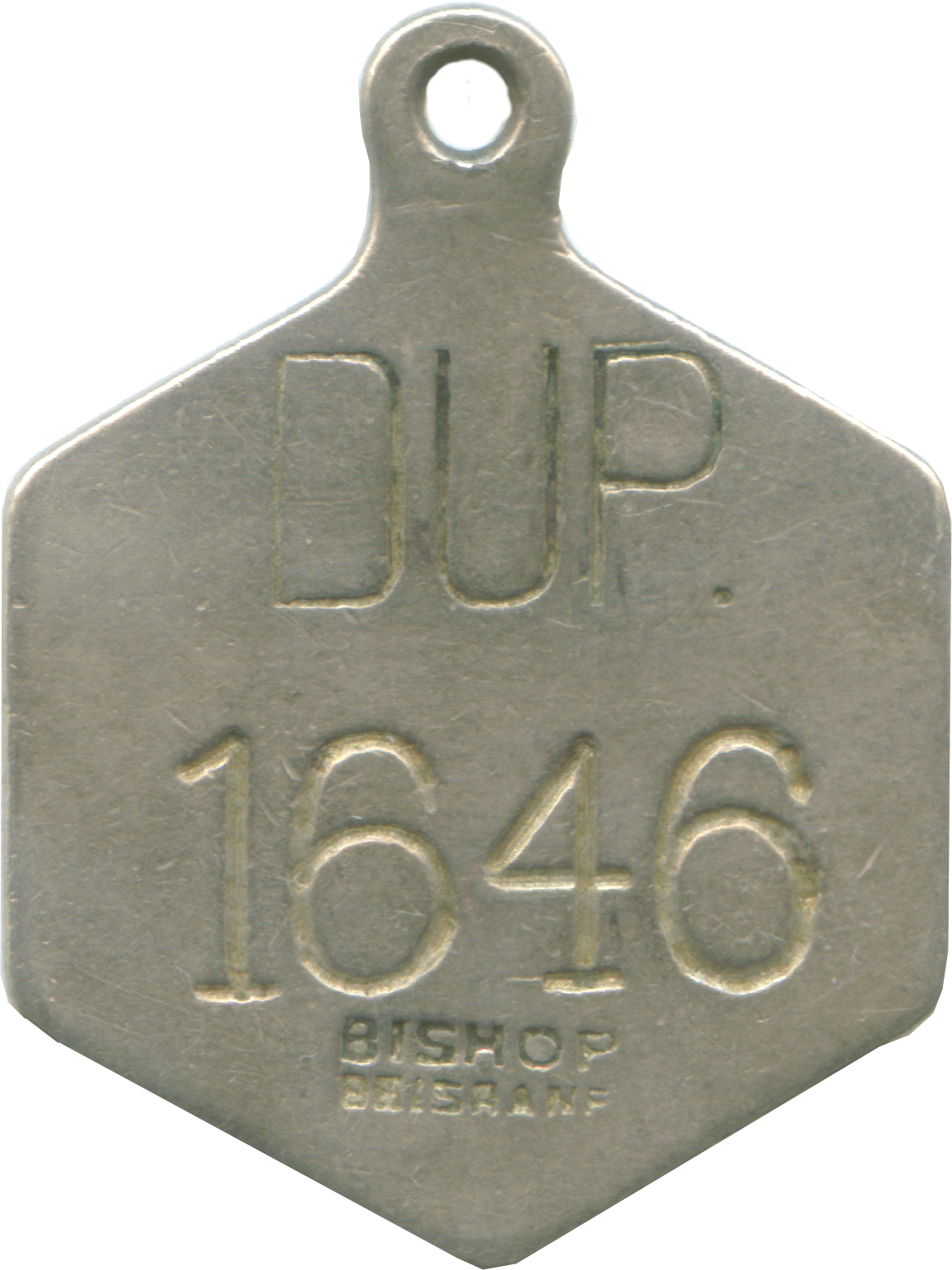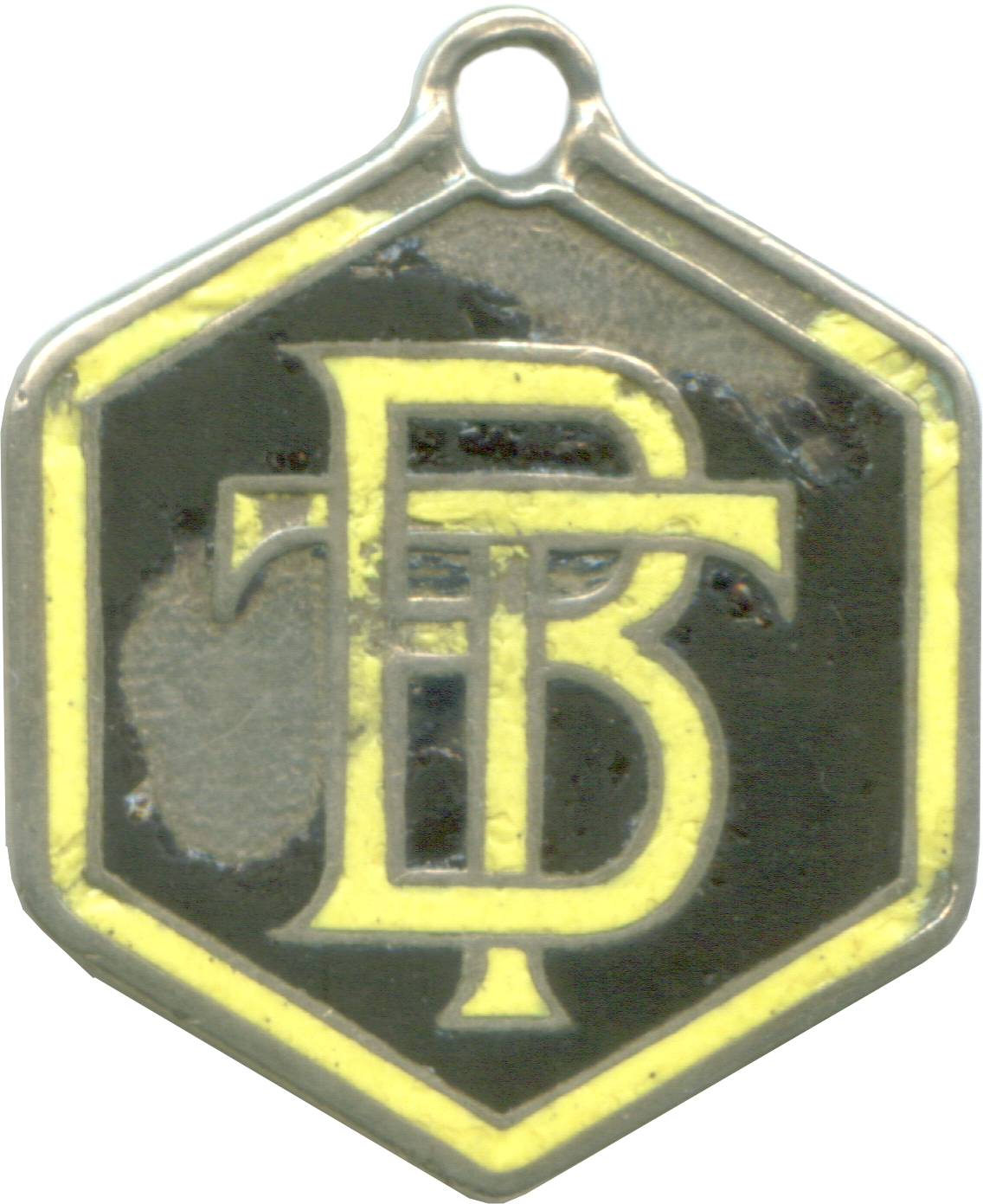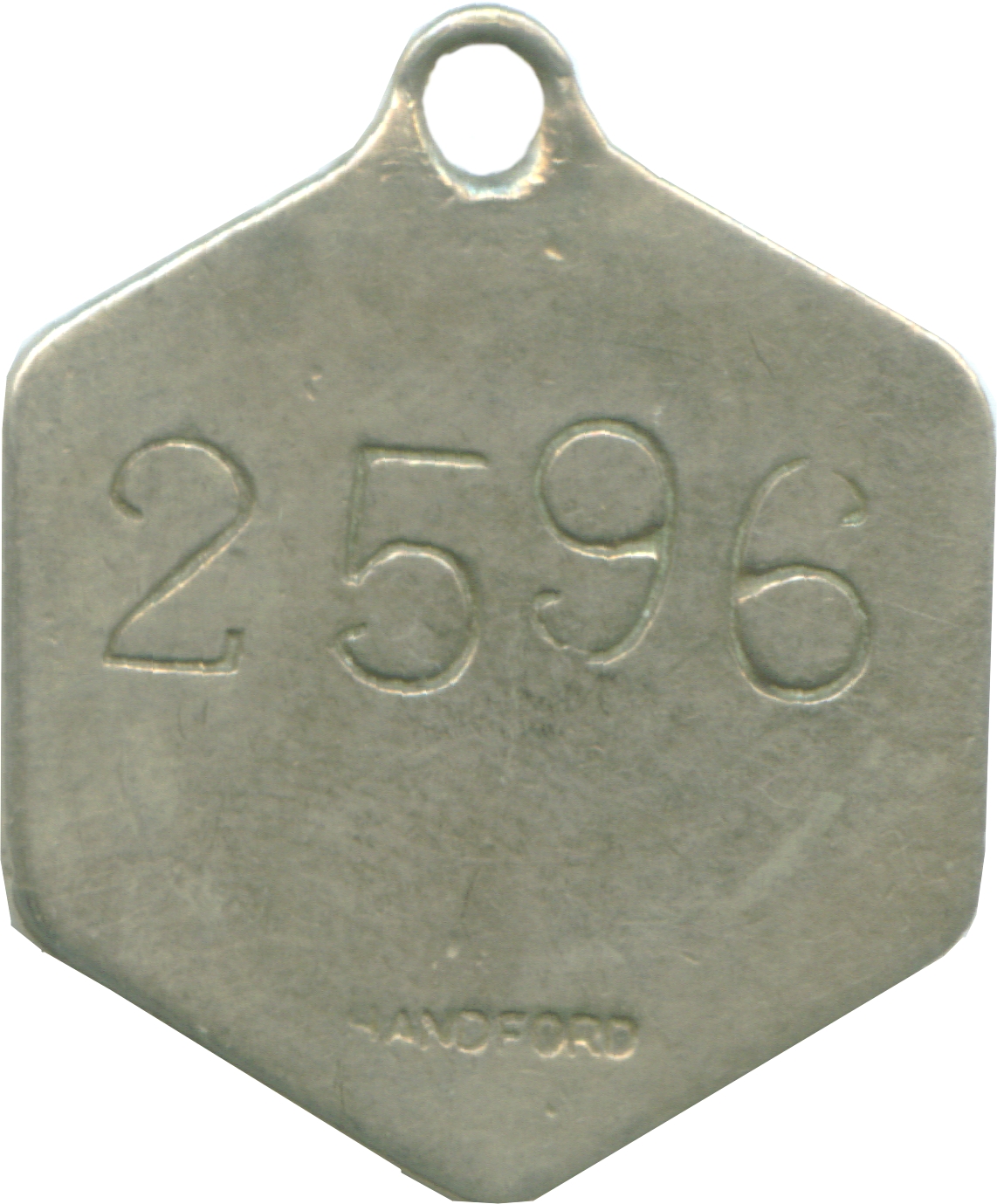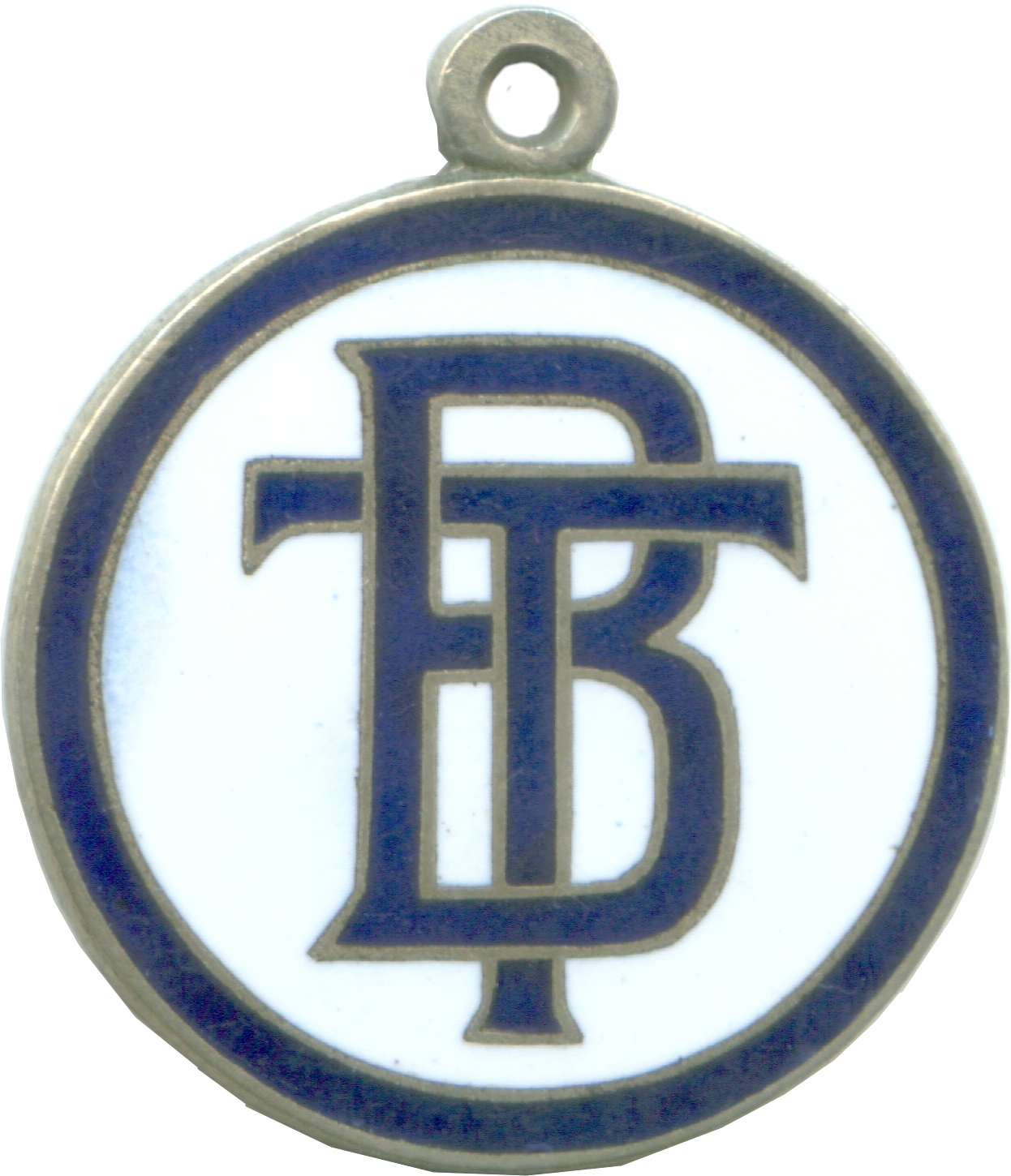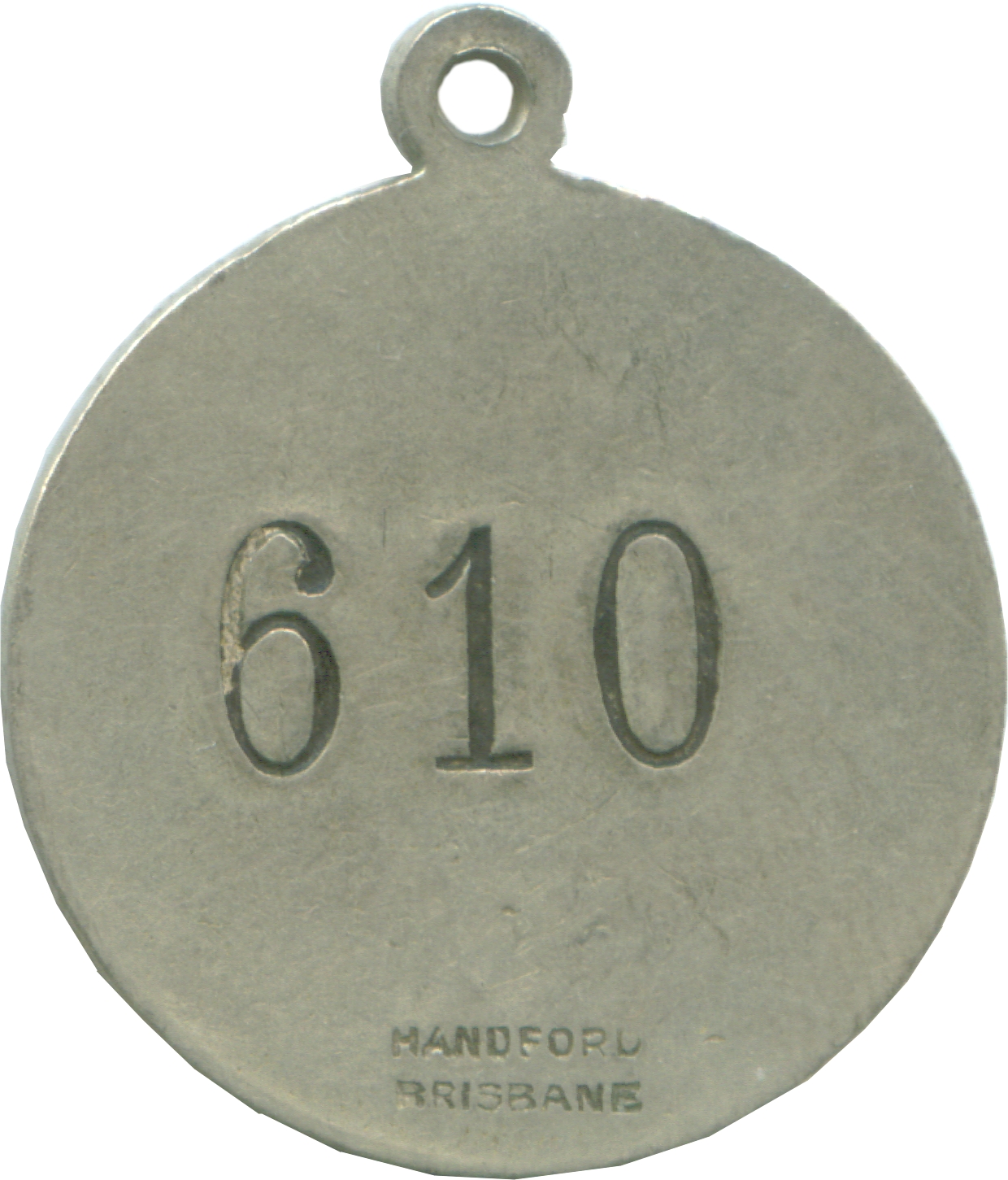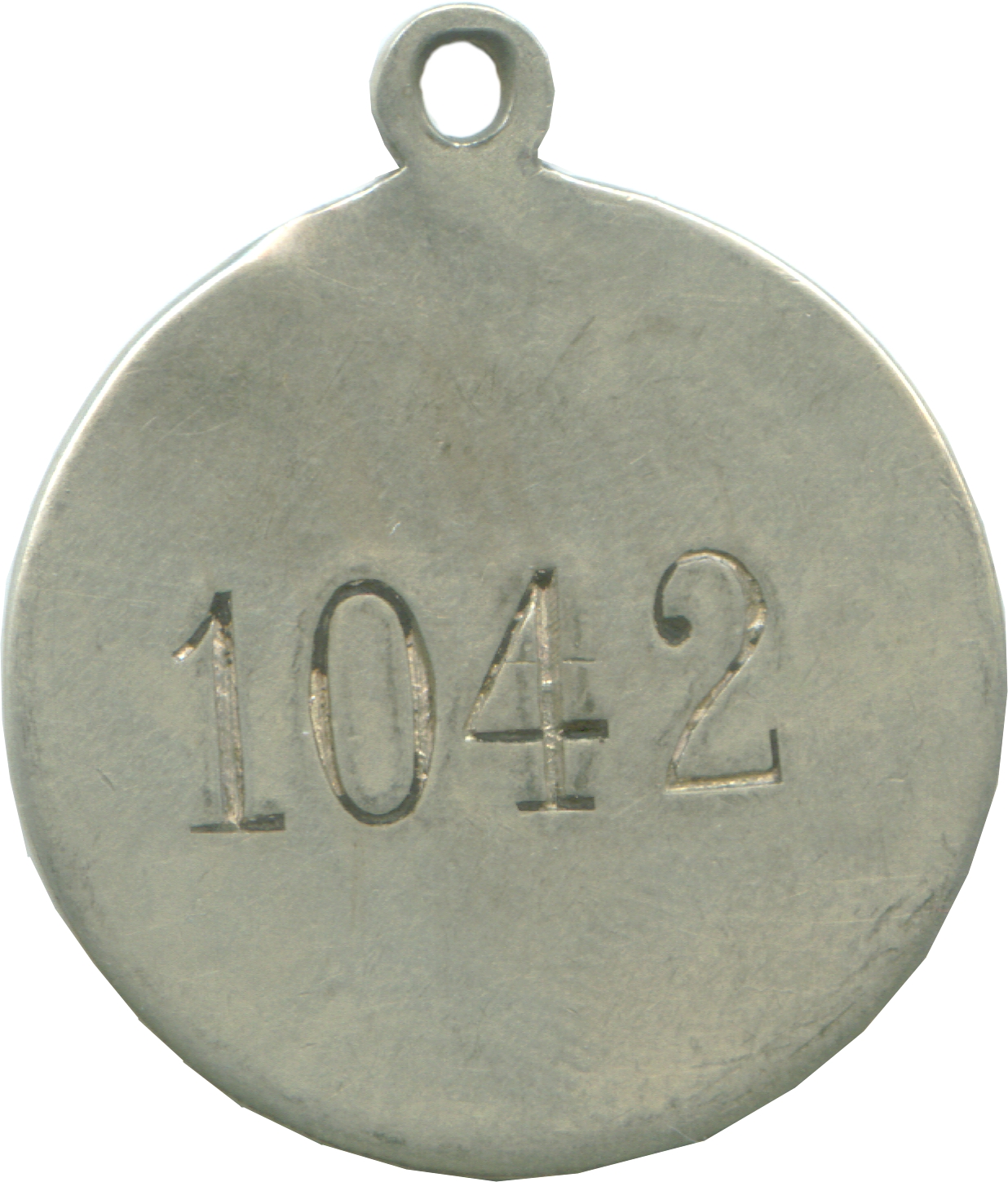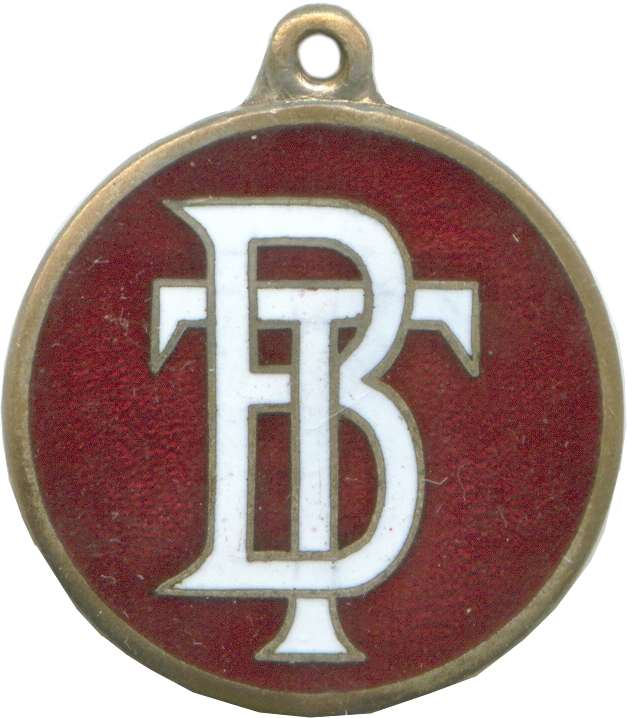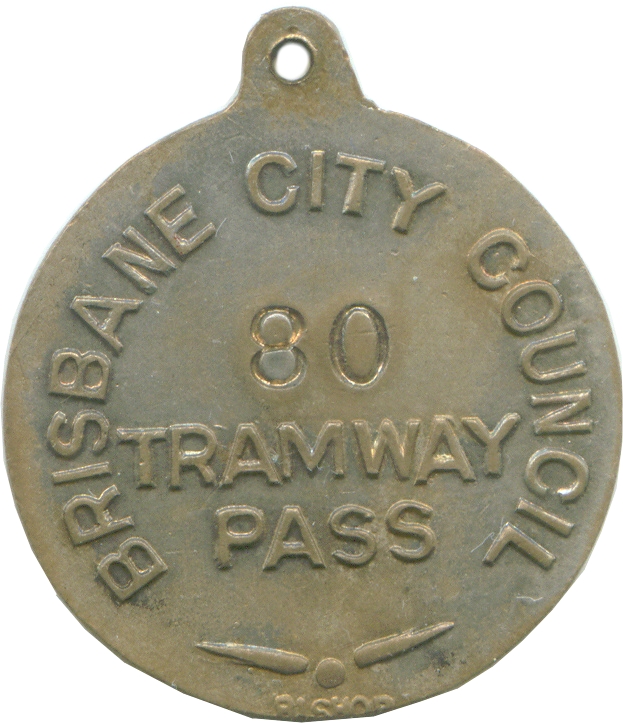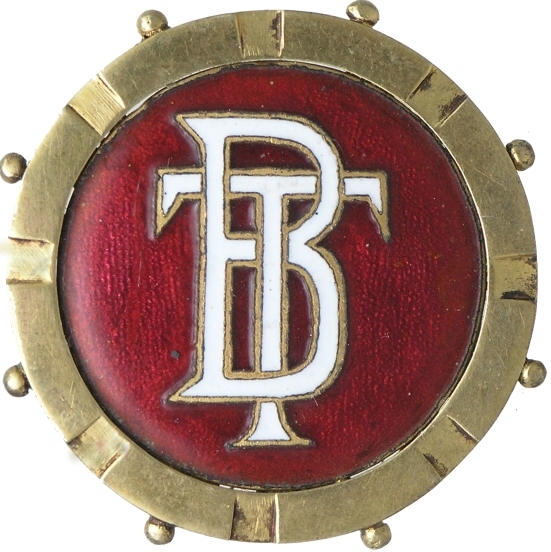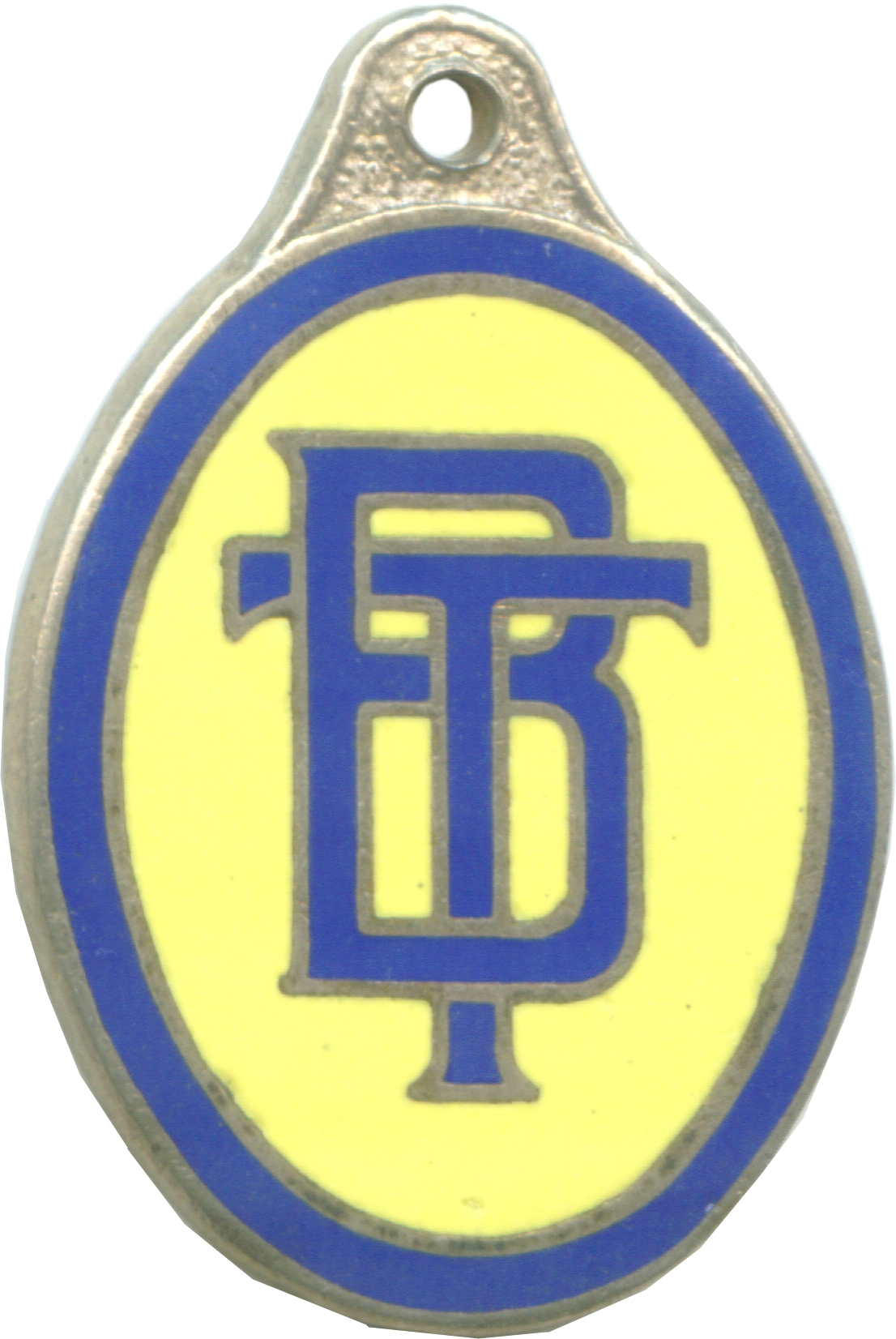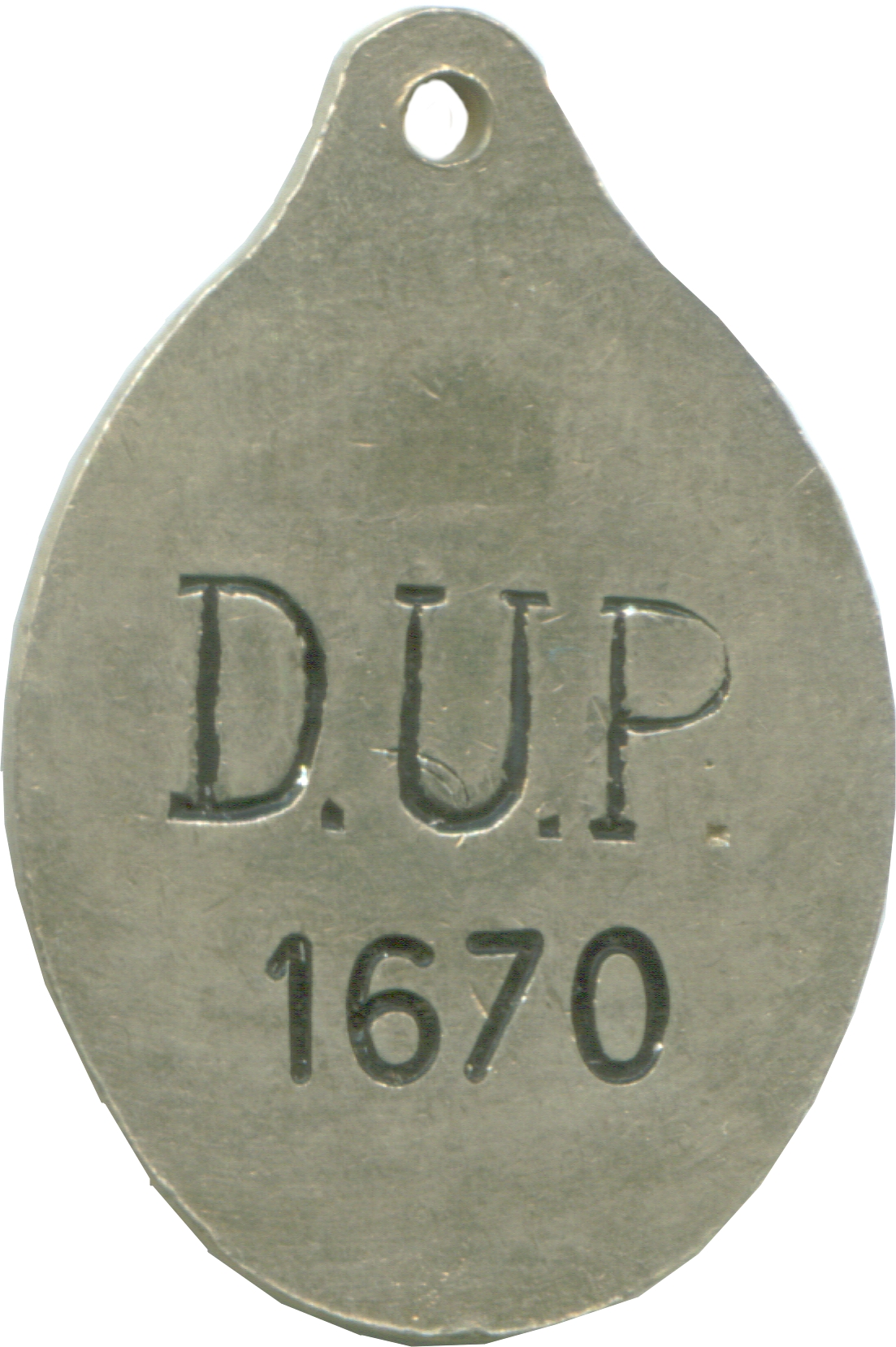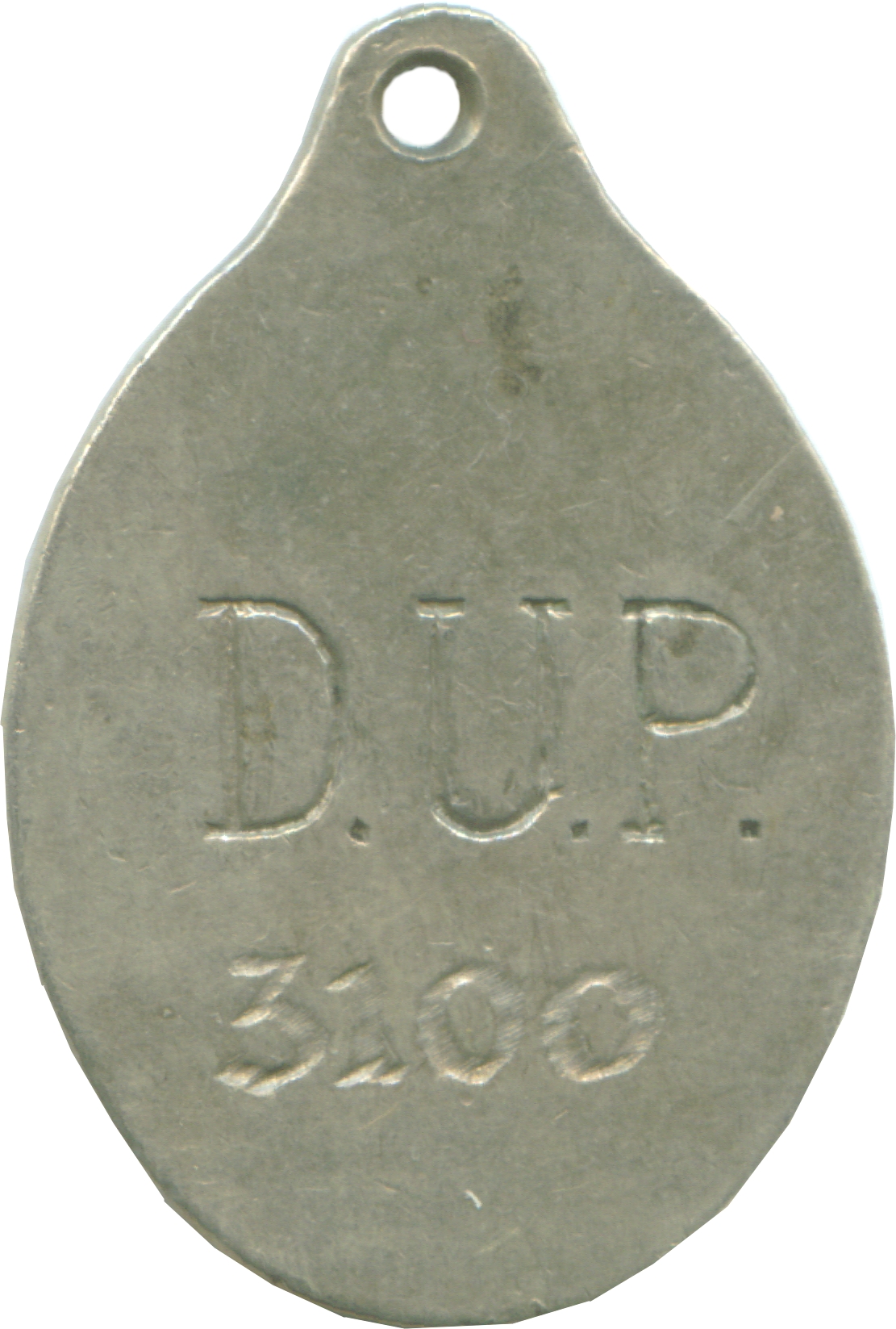by M. C. and S. C.
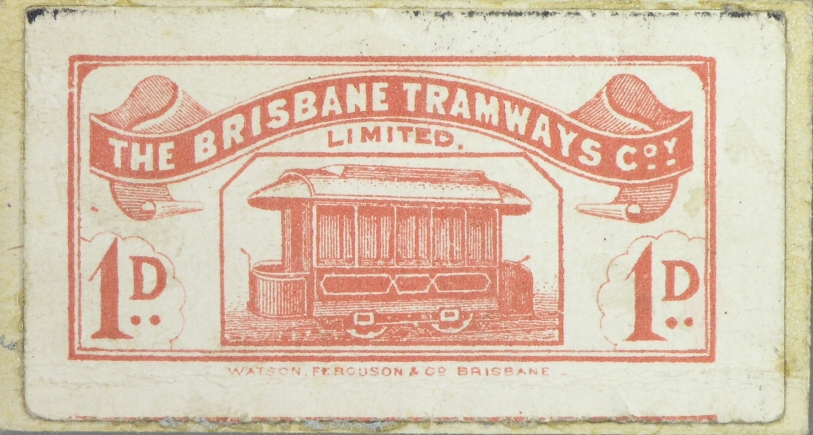
One of the transport related items that make their way occasionally onto the numismatic market are employee passes that were used by employees of the Brisbane Tramway and Power Departments. The majority are now held by the Brisbane Tramway Museum out at Ferry Grove but a few did escape in to numismatic hands before the handover to the museum.
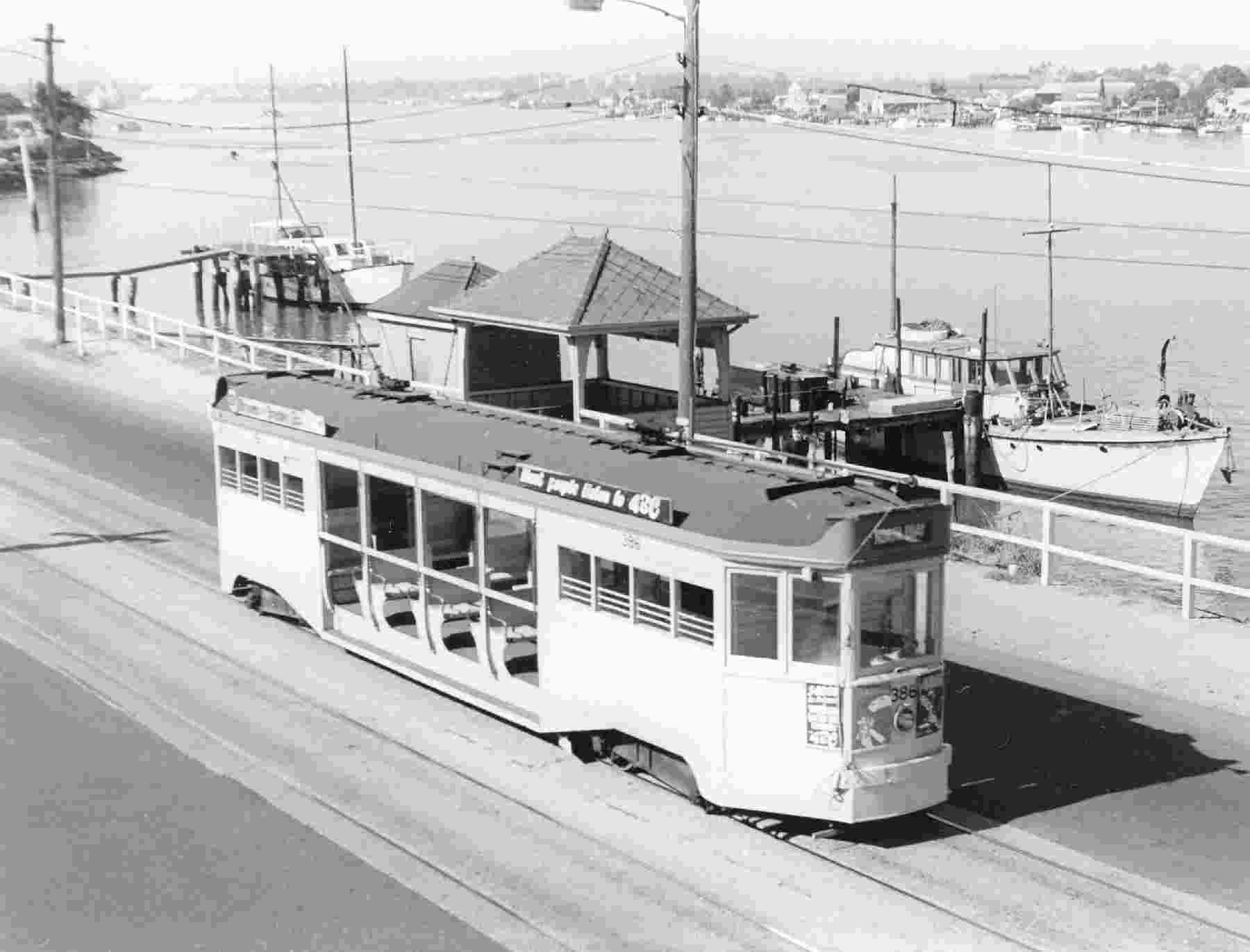
These passes are also listed in Frank Seckold’s Catalogue of Tokens and Passes used on Various Forms of Transportation in Australia (1998).
As stated by Seckold, Brisbane had an extensive tramway network which serviced most of the inner suburban area of Brisbane. An edited list of important dates from the Brisbane Tram Museum website gives an idea of the time frames for the different organisations.
| Important Dates: 1885 Horse drawn tram services were introduced in Brisbane by the Metropolitan Tramway and Investment Company 1897 Electric tram services commenced by the Brisbane Tramways Company. 1898 Last horse drawn tram service ends 1912 The Great Tramway Strike 1915 Paddington Depot opened |
The employee passes were used by both the employees of the Brisbane Tramway and Power Departments The connection between them is that electric trams require Direct Current electricity. Direct current is very necessary for motors in high torque situations such as starting stationary trams. The Tramway Company, The Trust and then BCC also sold direct current to other commercial users that needed that type of power. These included owners of buildings with lifts and users of heavy machinery used direct current such as the Brisbane brewery.
| Important Dates: 1923 1st January, Brisbane Tramway Trust took over from the Brisbane Tramways Company 1925 The Greater Brisbane City Council was formed on the 1st of July and took over tramway operations from the Brisbane Tramway Trust on the 1st of December 1940 BCC Transport Department created 1962 Paddington Depot destroyed by fire. 65 trams lost 1969 Trolley bus services ceased 13th March. The final closure of the Brisbane tram network occurred on the 13th April |
The private company operating the trams and then the trust thus needed their own supply separate from that of domestic supply. According to the Wikipedia, power for the electric trams was originally drawn from a power station operated by the tramway company adjacent to its Countess Street depot and workshops.
As the tramway company increased both the number of trams and the length of routes, the power supply rapidly became inadequate. Additional power generating units were installed at Light Street depot and a further powerhouse was built on Logan Road Woolloongabba, adjacent to the Woolloongabba railway line. Inadequate power supply was to remain a problem while the tramways remained in private hands. With the takeover of the system in 1922 by the Brisbane Tramways Trust (and subsequently the City Council) considerable investment was made in many areas including power generation and distribution. A larger powerhouse was built in New Farm which commenced generation in 1928 and was sufficient for both the needs of the tram system and other consumers.
The original Countess Street powerhouse was demolished and material from it was used to construct the new Tramways headquarters.
The Tramway and General Strike January 1912
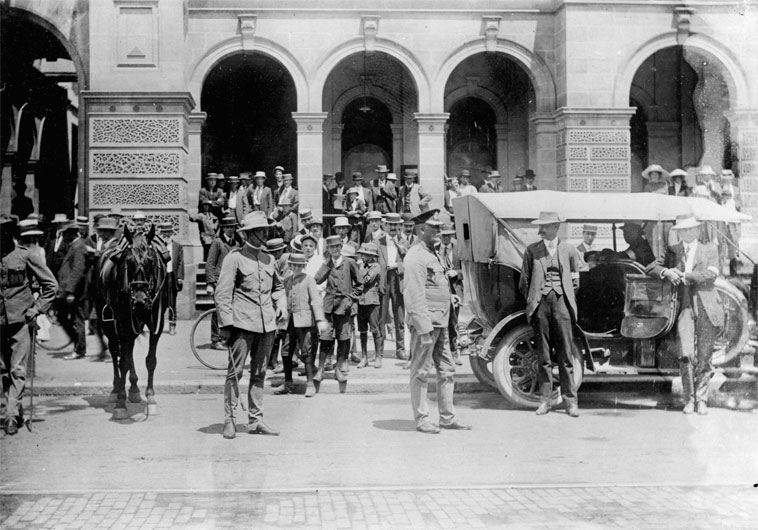
On January 18th 1912, a serious tramway strike took place and lasted for several weeks. The principal item in dispute was the reluctance of management of the Brisbane Tramway Company to pass on some of the considerably increasing Company profits to staff in the form of improved conditions and increased wages. The Tramway Company Manager was steadfast in his opposition to trade unions and refused to allow the crews to wear union badges whilst on duty. Subsequently, one by one, each man who defied the order was stood down from duty. Company Officials and some Motormen and Conductors who remained loyal tried to keep tram services operating but operation was greatly disorganised. A large section of Railway men struck in sympathy with the Tramway men and this caused further inconvenience, but most trains continued to run as usual. Eventually a total of 43 Unions joined in what was to be the world’s first General Strike. The strike severely polarised the community into its classes and political opponents. Violence flared on a number of occasions and after the Prime Minister declined a request from the Premier of Queensland’s to use Commonwealth troops to break the strike, the Police Department found it necessary to swear in hundreds of civilians as special constables. Some of these “constables” became over zealous and did little to solve the violent confrontations. Tramway services were sabotaged and fortunately on one occasion, a stick of dynamite wedged in the track failed to explode as a crowded tram passed over it.
Lack of supply of food and clothing for the families of the striking tramwaymen became so serious that the Union movement invoked its own form of currency. The Unions encouraged business people, who would be suitably re-imbursed after the end of the strike, to support the idea. This led to further confrontation when the business people refused and unionists implemented a boycott on their services.
Police, Special Constables and protesters met in a particularly nasty battle in Market square (now King George Square) on Friday 2nd February 1912. On what is now known as Black Friday, female protesters defied Police with drawn bayonets and continued to march on parliament. In the ensuing melee, the Police Commissioner’s horse was brought down with a hat pin. The horse fell on the Commissioner who sustained a permanent leg injury.
known as Black Friday, female protesters defied Police with drawn bayonets and continued to march on parliament. In the ensuing melee, the Police Commissioner’s horse was brought down with a hat pin. The horse fell on the Commissioner who sustained a permanent leg injury.
New tram crews were trained as quickly as possible and services gradually returned to normal after February 5th, but none of the tramway strikers were reinstated until after the Brisbane Tramway Company had become defunct in 1923.
Although the Tramway Strike ended without resolution after five weeks, the General strike dragged on in some industries until early March 1912. A few years after the strike, the Tramway Union took the matter of Union badges to the Federal Arbitration Court, which granted the men the right to wear them. Even a decade after the event, deep resentment and animosity lingered on between the men who chose to join the strike and those who chose to remain loyal to the Company.
Tram Employee Passes
The passes were provided to employees of the powerhouses and the transport departments to allow them to use the trams free of charge. Usage of the passes continued until the 1980″s even though the Brisbane trams were no longer operating past 1969. The passes were not able to be used on Queensland Rail which had its own system of passes for employees. For the employee passes, security was very tight. Large numbers of employees meant significant revenue could be lost if not controlled. According to G. Stevens who was a council employee, there was at least a monthly recall and reissue of passes. Records were kept of individual numbers and types issued for to each person and for each period. If a pass was reported lost or stolen, all current passes were recalled and a different shape and colour issued the following day.
Eventually these passes were replaced by plastic ID cards and the metal passes recalled. G. Stevens advises that the existing staff were offered their individual pass ‘sets’ including their employee number badges, which were no longer required to be used. Those that were not picked up by the employees were then offered to scrap dealers and the remainder were eventually passed to the Brisbane Tram Museum.
Employer Passes
There was perhaps a different story for the Employer Passes. The Councillors and Mayors of Brisbane City Council had individual gold passes) for the purposes of their duties. Similar to the  state and ot
state and ot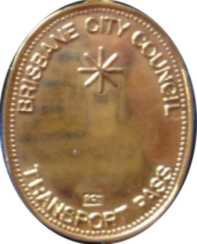 her local councils these passes were made available while the councillor or mayor was in office and were to be returned when they left office. Stories exist that some owners neglected to do so or refused.
her local councils these passes were made available while the councillor or mayor was in office and were to be returned when they left office. Stories exist that some owners neglected to do so or refused.
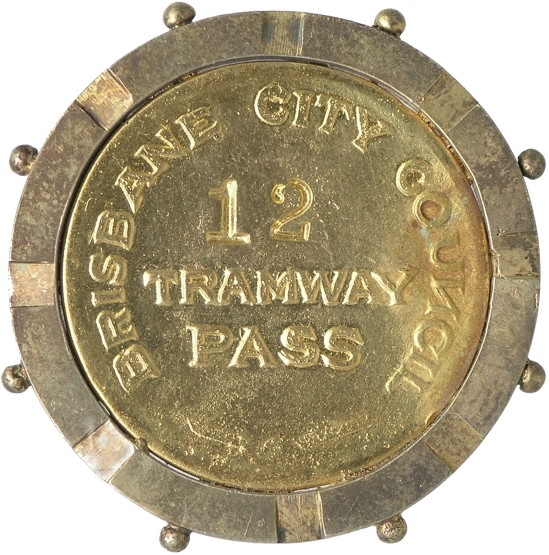
One councillor’s wife refused to return the pass after her husband died in office. Others were lost or not handed back. The pictures shown here are of a modern style pass issued by the Transport Department in 9ct. This is a post 1940 example held by the Queensland Tram Museum. In general very few of these passes would have made their way into numismatic hands although as mentioned above there are a few that are unaccounted for.
Types and Varieties of Employees Passes
Prior to or after being offered to the scrap dealers, at least three Queensland Numismatists were allowed access to the stockpiled material. Examples of the varieties of the different passes were allowed to be kept by those collectors. As a result the following table was able to be compiled from some of those passes. The table also includes information from Seckold and Smith. Seckold lists eight different employee passes including two that were included in the Catalogue of World Horsecar, Horse Omnibus, Streetcar, and Bus Transportation Tokens by K.E. & K.S. Smith (AVA). Reference numbers for both are included in the table where possible.
It should be noted that the Hexagonal shaped passes with white or cream lettering on Black (Seckold) was not represented in that final stockpile when recalled by BCC. It is suggested that these are actually yellow on black passes especially as the various types and manufacturers match up very well. They are kept separate in this table until that can be confirmed either way. Also not represented in the stockpile were the Hexagonal Black – Green pass (in Seckold and Smith), the round Dark Blue – White BTT pass (Seckold & Smith), and a round Red – White BT pass (Type 20; Carter and Dean Collections). The Red – White BT passes are passes for special visitors or external dignities. G. Dean advises that the Number 12 pass was issued to the Mayor of Ipswich.
G. Stevens also advised that one of the passes was manufactured by BCC at the Coronation Drive Depot. This was supposed to be an oval pass, made of steel with no manufacturer imprint on the reverse.
Additional information and details of varieties would be welcome.
The following are images of the different types that we were able to obtain. The images are from the C., A., and D. Collections. Type numbers are referenced in the details table.
Details Table:
| Type | Background / Letter Colour | Numbers and Manufacturers | Seckold (AVA) | |
| Hexagonal with long handled loop at top | ||||
| Black /White- Cream | ‘BT’ Overlapping in Centre. | |||
| 1 | Brass, silver plated | Low numbers | (No manufacturer mark) | 3081 |
| 2 | White Metal (Nickel+) | Numbers 900s to 1400s | 3082 | |
| 3 | Steel (?) some corrosion | Numbers all in 2000 group | (No manufacturer mark) | 3083 |
| 4 | Nickel plated Brass | AJParkes / AUST.WIDE / (number) | 3084 | |
| Black/ Green | ‘BT’ Overlapping in Centre. | |||
| 5 | White Metal (Nickel+) | Numbers 900s to 1400s | 3085 (160PA) | |
| Black/ Yellow | ‘BT’ Overlapping in Centre. | |||
| 6a | Brass, silver plated | ‘1260’ | (No manufacturer mark) | 3081(?) |
| 6b | Brass, silver plated | ‘0196’ | DUP / 0196 (No manufacturer mark) | |
| 7 | White Metal | ‘1367’,‘2684’ | (No manufacturer mark) | 3082(?) |
| 8 | White Metal | ‘229’ | A / (number) (No manufacturer mark) | |
| 9 | Steel | ‘2438’ | (No manufacturer mark) | 3083(?) |
| 10a | Nickel plated Brass | ‘2424’ | AJParkes / AUST.WIDE / (number) | 3084(?) |
| 10b | Nickel plated Brass | ‘2416’ | DUP / AJParkes / AUST.WIDE / (number) | |
| 11 | White Metal | ‘3051′,’3239’ | (number) / HANDFORD / BRIS | |
| 12 | White Metal | ‘484’ | DUP. / (number) / WALLACE BISHOP (curved) / BRISBANE | |
| 13 | White Metal | ‘1426’ | DUP. / (number) / BISHOP (small letters) / BRISBANE (small letters) | |
| 14a | White Metal | ‘1618’ | (number) / BISHOP (large letters) / BRISBANE (small letters) | |
| 14b | White Metal | ‘1646’ | DUP. / (number) / BISHOP (large letters) / BRISBANE (small letters) | |
| Hexagonal with loop at top (loop close to badge) | ||||
| Black / Yellow | ‘BT’ Overlapping in Centre. | |||
| 15 | ‘2596’ | HANDFORD | ||
| Round with loop at top | ||||
| Dark Blue / White | ‘BTT’ Overlapping in Centre | |||
| 16 | Bronze | ? | Brisbane Tramways Trust Pass | 3101 (160PB) |
| White / Dark Blue | ‘BT’ Overlapping in Centre. | |||
| 17 | White Metal | Numbers from 100 to 2000 | (number) / HANDFORD / BRISBANE | 3090 |
| 18 | White Metal | ‘1042’ | (No manufacturer mark) | |
| Red / White | ‘BT’ Overlapping in Centre. | |||
| 19 | White Metal | ’12’,’80’ | BRISBANE CITY COUNCIL / (number) / TRAMWAY / PASS /BISHOP | Special Issue |
| Oval with loop at top | ||||
| Yellow / Blue | ‘BT’ Overlapping in Centre. | |||
| 20a | White metal | Full range of numbers to 2986 | (No manufacturer mark) | 3095 |
| 20b | White metal | ‘1670’ | D.U.P. / (number) | |
| 20c | White metal | ‘3100’ | D.U.P. / (number engraved) | |
| 21a | White metal | Full range of numbers to 2986 | (number) /HANDFORD | 3095 |
| 21b | White metal | ‘3399’ | (number) / HANDFORD | |
Conclusions
-
Several sets potentially exist for each number or type.
-
Not all duplicates were marked as duplicates with DUP
-
Manufacturers varied including A.J. Parks, Handford and Wallace Bishop.
-
Not all varieties have been identified
-
There is a potential point of confusion concerning the Seckold 3081 to 3084 description and the Smith 160PA item concerning colour.
Other relevant items
Brisbane City Council – Department of Transport:
-
Employees badge (Cap), large red and blue enamel oval badge – Conductor
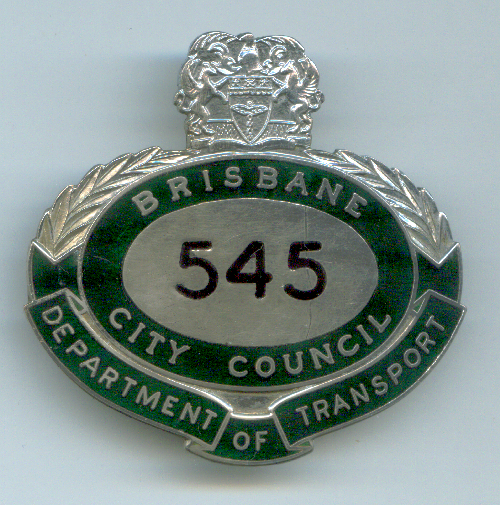
-
Employees badge (cap), large red and blue enamel oval badge – Motorman
-
Employees badge (cap), large Green enamel oval badge (1967 issue)
-
Employees badge, round with number in centre
-
Employees badge, round with number in centre with leather toggle attached

References
-
Seckold, Frank, Catalogue of Tokens and Passes used on Various Forms of Transportation in Australia, Self Published (1998).
-
K.E. & K.S. Smith, Catalogue of World Horsecar, Horse Omnibus, Streetcar, and Bus Transportation Tokens (AVA)
-
K.E. Smith, Catalogue of World Transportation Tokens and Passes (AVA)
-
en.wikipedia.org/wiki/Trams_in_Brisbane
-
www.brisbanetramwaymuseum.org
-
M.E.F. Books Collectors’ Selection: Australasian COIN & BANKNOTE (March 2003) pp29
